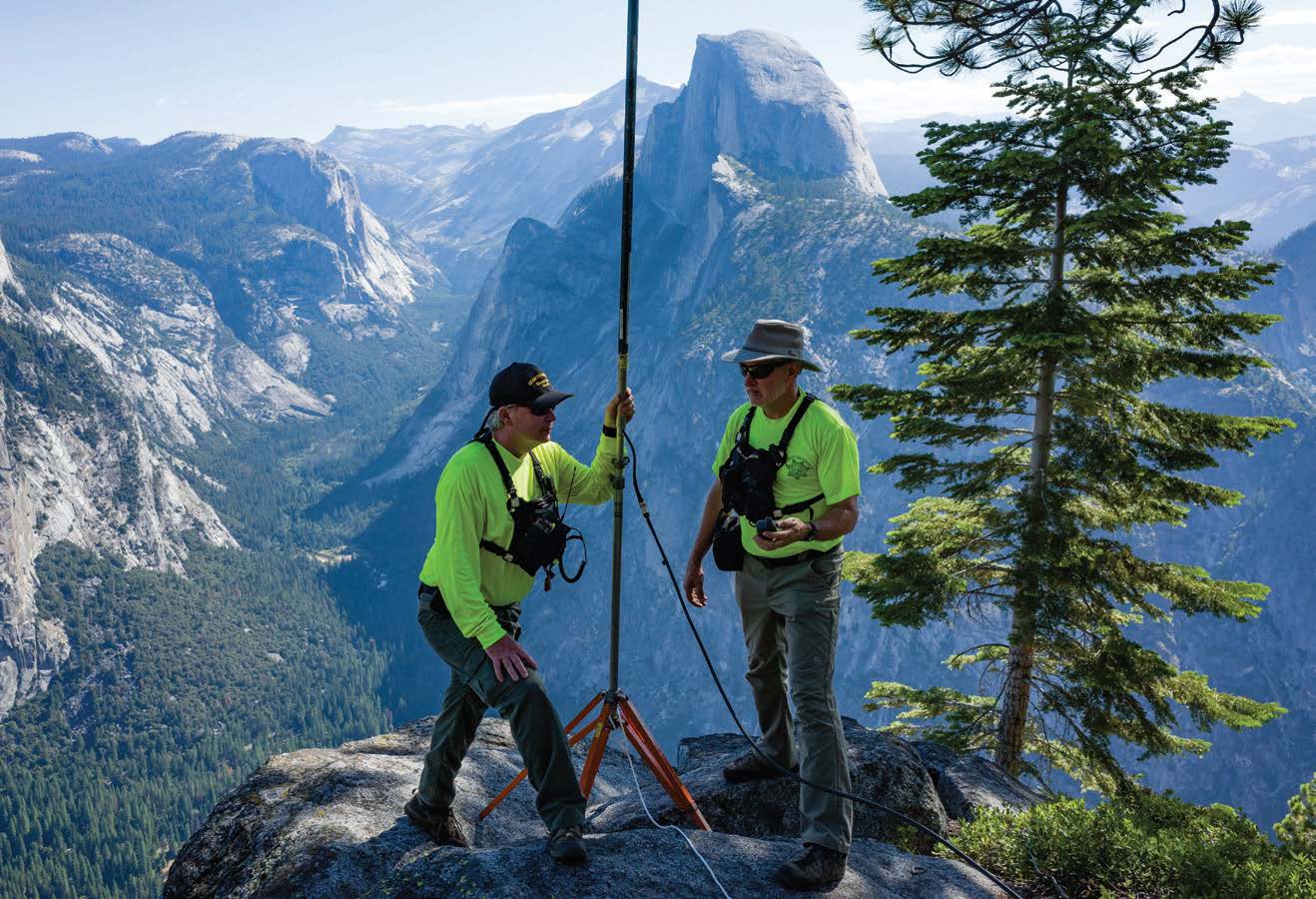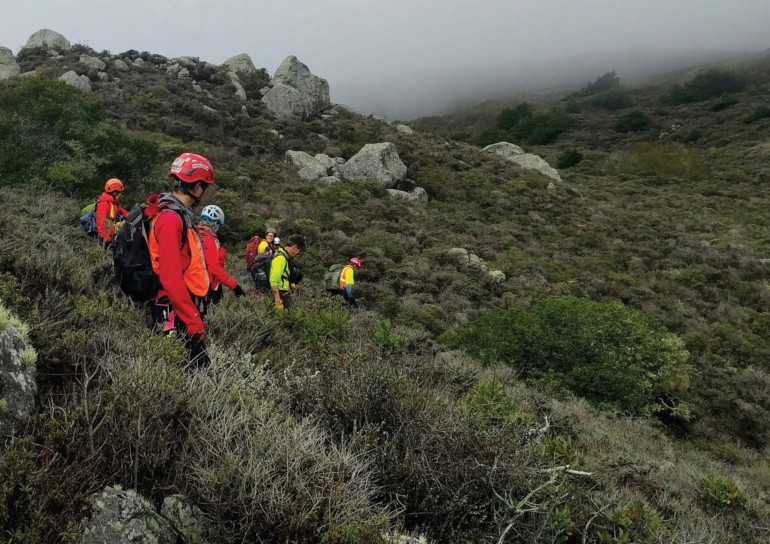IF YOU GET lost on any of the hundreds of miles of trails that wend through Marin County — or Yosemite, Mount Whitney or the Trinity Alps — chances are the dedicated volunteers from the Marin County Sheriff’s Department Search and Rescue Team will be called to come help look for you.
They aren’t paid for the work: they leave families, jobs and classes, grabbing their 24-hour backpacks and gear to travel all around the county and state on a moment’s notice to find the lost, injured and missing. Marin’s search and rescue volunteers are high schoolers, stay-at-home moms, college students, financial planners, retired executives, paramedics, firefighters, nurses and retirees. And they’re considered one of the best teams in the state.
Ten years ago, Rich Shelton of Tiburon had retired as a managing director of commodities trading at Morgan Stanley and was looking for volunteer opportunities that involved the outdoors. He looked into docent programs and posts in parks like Point Reyes and Angel Island before joining Marin County Search and Rescue in 2011. Now a search manager and the unit’s personnel manager, Shelton spends hundreds of hours a year helping lead and manage searches both in Marin and around California. “The most surprising thing is that a volunteer organization is the first line of defense when someone goes missing,” he says.
Last year the unit, which has about 100 members, participated in 42 searches, which are typically efforts to help anyone from a despondent person or dementia patient to a missing hiker. Marin’s team also joined search and recovery missions in the Sonoma and Napa fires of 2017; the Camp Fire in Butte County; on Mount Shasta and Mount Whitney; and around Lake Tahoe and Yosemite National Park. About 30 members are young people, who are allowed to join as early as high school freshman year.
All members undergo a 65-hour training program that teaches search strategies, compass and map reading, and basic rope skills and culminates with a night on Mount Tamalpais with no tent or sleeping bag. “I’ve been so impressed with everyone’s commitment,” says Lieutenant Pierre Ahuncain, the Marin County Sheriff’s Office search and rescue coordinator since January 2017. What stood out to him at once was how much time members spent behind the scenes working on training, planning and equipment maintenance. Ahuncain himself went through the new member boot camp, including that chilly night on Mount Tam, so he’d understand what team members faced.
Originating in 1970 as a Boy Scout Explorer Post, the unit started focusing on search and rescue in 1976 under sponsorship of the Red Cross; the sheriff’s department took over in 1978. Some of the first missions looked for victims of the Trailside Killer, who murdered seven hikers in Marin between 1979 and 1981. Membership dwindled for a while in the late ’80s: “The team had ground to a halt,” recalls current Unit Leader Michael St. John, who joined in 1979 at age 16. He worked with others to transform the team, boosting training, introducing the boot camp, and developing skills for organizing searches and managing people and resources. By 1994 the team had 60 volunteers.

Rich Shelton (left) and Scott McDaniel setting up communications equipment above Yosemite Valley.
It’s not for everyone: besides the rigorous boot camp, members attend two evening meetings and a weekend all-day training each month and are expected to respond to at least 30 percent of the calls. That can mean putting the team first — sometimes ahead of family or job — which can be tough, admits Ellen Kruger, a San Rafael mother of three grown kids who volunteered with her search dog in 2011 and is now K9 manager for the team. But she participates because it brings joy and is a way to give back.
Perhaps because he joined as a teen, St. John has been an especially strong supporter and promoter of youth membership, a rarity in search and rescue teams. “It is so important to me because I’ve seen the profound effect giving responsibility and leadership can have,” he says.
Madison Grove-Burke, 19 and in college, was 14 and a freshman at Drake High when she became involved. Last November she and 30 adult teammates spent two days combing through remains of burned homes and cars to help the Butte County Sheriff’s Office with the massive task of accounting for the missing. “All that destruction was like nothing I’d seen before,” she says. It was often St. John who pushed her to take on new tasks and to lead trainings, she adds, even when she wasn’t sure she was ready, and support from him and other members helped guide her success. She credits that experience with steering her toward a career goal of being a flight nurse. “(Joining the team) was the most influential decision I ever made.”
Youth president Liam Anderson, now a senior at Redwood High, says being on the unit since age 14 has taught him many outdoor skills and how to work in complex environments as a team. “What I’ll carry with me, though, is learning through experience what a good leader is.”
The adults, in turn, are effusive in their praise of the youth: “I’m totally blown away” by their “professionalism, the dedication and the ability to learn everything,” Shelton says. A young member played a starring role in one of the unit’s most celebrated rescues: finding Miyuki Harwood, who became separated from other hikers in the John Muir Wilderness of Fresno County in 2015. Smoke from a nearby wildfire had hindered the search; finally, Marin youth member Kobe Pole heard her whistle. Harwood, who’d been missing nine days, had significant injuries including two broken legs, and Pole, then a 15-year-old Redwood High sophomore, helped the members attend to her (all are required to have medical training) until a rescue helicopter came.
While teams in other counties are often taken aback when Marin’s teenagers show up, they usually wind up being impressed. “Other searchers and counties are surprised at our competence and ability to perform,” Anderson says. In fact, some have even told him they might not be able to get the kids they know to do the job.
This article originally appeared in Marin Magazine's print edition with the headline: "Anytime, Anywhere".


